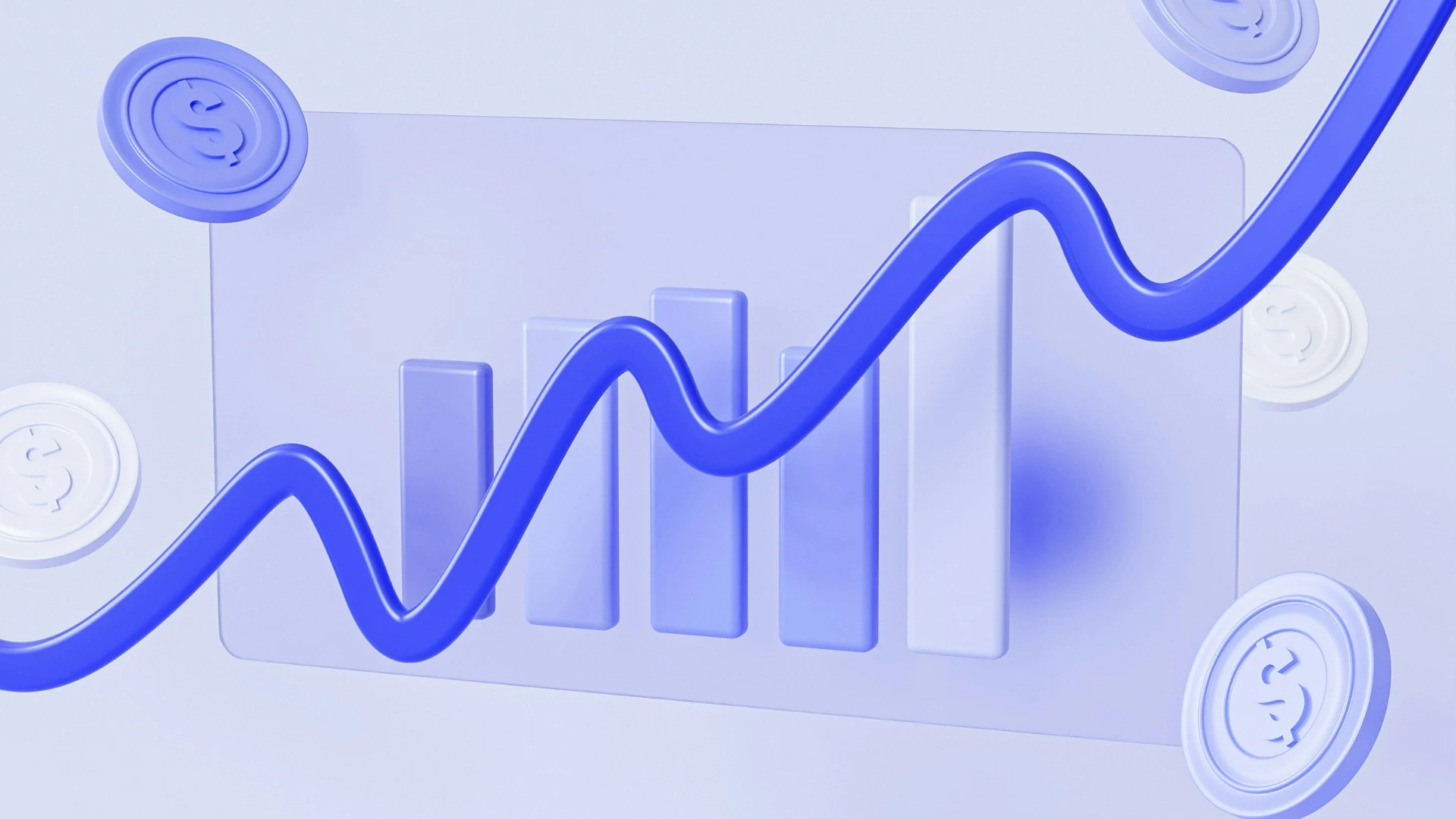
CMMS
Facilities Technology ROI: How to Justify Your Tech Investments to Leadership

Facilities teams often face a lot of pressure to deliver operational excellence while still controlling costs. They are responsible for keeping multiple facilities running smoothly without incurring unnecessary expenses. One of the best ways to accomplish these competing demands is to utilize modern, flexible facilities technology solutions. However, securing budget approval for these platforms is a big challenge.
Any facilities manager who wants the freedom to purchase the right technology options should be prepared to build a compelling business case for the investment, focusing on the ROI of facilities technology.
We’ve watched numerous organizations find new levels of cost control after implementing an innovative new CMMS like Fexa. In fact, most companies see a 15-20% reduction in their maintenance costs, with much of that happening in the first year.
The ROI of facilities management software should make everyone in the company excited, especially the finance team. When you build a strong justification for investments in technology, you are one step closer to a better financial outlook for the facilities department.
What does ROI really look like when it comes to facilities management software?
The ROI of facilities management technology creates both immediate savings and long-term value. Although the exact numbers look different from one organization to the next due to size, facility types, and what you’re already using to manage your facilities, this is a bulletproof fact: a great facilities management software solution is worth the investment.
When building a business case for new facilities management software, be prepared to explain the following ways that it can impact your bottom line.
Direct Cost Reduction
Implementing a robust, flexible CMMS typically delivers a 15-20% reduction in maintenance costs, thanks to both automation and optimization processes. Automation, in particular, reduces the labor costs of facilities work: Teams save approximately 10-15 hours per week per team member by eliminating manual processes. This frees up you and your staff to work on more pressing maintenance issues, like keeping assets up and running.
Operational Efficiency Gains
Beyond direct savings, operational improvements deliver substantial value. Modern systems enable:
- Faster response to equipment failures
- Higher first-time fix rates
- More effective resource allocation
- Streamlined communication
For teams managing hundreds of work orders monthly, automated notifications alone can save dozens of hours previously spent on administrative follow-up.
Compliance Risk Reduction
Compliance issues cost money. There are costs associated with maintaining compliance, but the costs of failing to comply with regulatory standards are even greater.
For example, when it comes to refrigerant management regulations, the EPA can impose fines up to $60,000 per day per violation for infractions under the AIM Act. Beyond financial penalties, regulatory violations can force facilities to cease operations until compliance is restored.
Modern platforms (like Fexa Trakref) significantly reduce these risks through better compliance tracking and documentation.
Asset Longevity
Preventive maintenance programs are key to extending the lifespan of your assets. Emergency repairs, on the other hand, are expensive and cause major operational disruptions. (After all, no one can shop at a 5-acre shopping center if an electrical issue causes hours of downtime—that’s a lot of lost income!)
Extending the longevity of your assets creates substantial financial benefits by deferring costly replacements and maximizing return on existing capital investments. You also have less downtime and improved energy efficiency when your CMMS tracks every asset and notifies you of issues before they get expensive to fix.
How can you quantify the hidden costs of outdated tools and manual processes?
The true cost of outdated facilities management extends far beyond visible expenses. Your proposal should address these “hidden” costs to show how they are currently affecting your organization—and how a new facilities management software solution can fix them.
Labor Hours and Productivity Loss
Facilities managers often report spending a large percentage of their time on the following tasks:
- Following up with vendors
- Updating stakeholders
- Calling facilities to ask for updates from on-site staff
- Managing communications
- Asset-related data entry
Each of these tasks is important, but they don’t have to be as time-consuming once you have a high-quality CMMS automating certain workflows for you. By automating these processes, you reduce the amount of time that you or your staff have to spend on these tasks.
Automation is not about eliminating people from your current team and replacing them with software. Rather, it is about reducing the labor hours spent on low-level tasks through automation, thus freeing up your staff to be more productive in their jobs.
Reactive vs. Preventive Maintenance Costs
Reactive maintenance typically costs a lot more than preventive approaches. Without regular maintenance, equipment deteriorates faster, creating a cycle of increased emergency repairs and shortened life cycles.
Reactive maintenance involves:
- Expedited service charges
- Overtime rates
- Rush shipping for parts
- Operational disruptions and downtime
Organizations that allocate at least 50% of their maintenance budget to preventive maintenance, rather than reactive repairs, see higher profitability overall.
A great thing about facilities management software is that it supports a shift to preventive maintenance, even for organizations that have been spending the majority of their budget on emergent repairs.
Hidden Refrigerant Costs
We’ve learned that a typical HVAC/R system that has a 20% refrigerant leak can increase annual running costs by 15%. The longer it takes you to become aware of and respond to the refrigerant leak, the more you lose on a completely unnecessary cost.
Modern refrigerants cost anywhere from $90-$250 per pound, which means these leaks get expensive fast. If your refrigerant management software is a stand-alone solution that doesn’t integrate with your CMMS, it is much easier to miss opportunities to prevent and respond to leaks quickly.
What metrics and data should you use to support your business case?
When putting together a purchase proposal for the organization’s decision-makers, the more data you can provide, the better. Specific metrics make a compelling case for ROI. You’re going to want to collect operational performance metrics, as well as financial performance indicators and compliance data.
Key operational metrics include:
- Work order completion rates
- Mean Time to Repair (MTTR)
- Preventive vs. reactive maintenance ratio
- First-time fix rates
- Response time performance
As for financial metrics, your goal is to show that operational improvements will translate into meaningful business impact. Consider including these data points:
- Maintenance cost per square foot
- Emergency repair spending as a percentage of the total budget
- Energy consumption trends
- Vendor cost per work order
- Total cost of ownership (TCO) for key assets
Lastly, you need to provide compliance metrics. For organizations with refrigeration systems, compliance tracking is particularly important. The AIM Act now requires documentation for systems with as little as 15 pounds of refrigerant, significantly expanding the compliance burden from what it was in previous years.
These metrics will support your case:
- Regulatory violations
- Refrigerant leak rates
- Documentation completion percentage
- Safety incident frequency
- AIM Act compliance status
- Asset compliance with preventive maintenance schedules
- Vendor insurance and certification status
- Audit readiness scores
What if you don’t have access to these metrics?
If you’re working with outdated facilities management software or your organization is depending on manual processes, then you may not be able to easily access all of these useful metrics. Alternatively, you may only be able to gather them after a lot of effort.
There are two courses of action if you can’t provide all of these metrics.
- Explain the gap itself as evidence for your case. The inability to quickly produce these metrics highlights a fundamental problem with your current systems. Show decision-makers how modern facilities technology would provide immediate access to these data points, enabling better decision-making and operational control.
- Support your argument with the excessive time commitment required to compile basic information. Document how many hours it takes your team to gather data manually, cross-reference information across systems, or reconstruct maintenance histories. This time analysis often reveals significant hidden costs that would be eliminated with proper technology.
How do modern platforms like Fexa CMMS and Trakref drive long-term value?
This simple argument should be at the heart of your justification: Modern CMMS and facilities management platforms transform facilities departments from a reactive cost center into a strategic contributor to organizational success.
Fexa’s flexible CMMS is your biggest asset when it comes to improving operations. Paired with Fexa Trakref for refrigerant management, these tools can revolutionize how you maintain assets, manage compliance, and control costs.
Let’s look at four of the most important capabilities of Fexa CMMS and Fexa Trakref.
1. Fexa CMMS supports your transition to prevention-first operations
Shifting from focusing on reactive maintenance to a preventive framework saves money, but it’s also a logistical challenge. Fexa’s CMMS rises to that challenge by providing you with smart automation, enabling:
- Automated preventive maintenance scheduling
- Intelligent work order routing
- Mobile access for field technicians
- Condition-based monitoring
2. Fexa CMMS + Fexa Trakref integration is an audit-ready refrigerant management solution
Combining your facilities management software with your refrigerant management platform is the ideal compliance solution.
This integration means no more bouncing back and forth between different systems or missing key compliance steps. Rather, refrigerant-related work orders automatically trigger the right compliance documentation, while compliance requirements feed directly into your maintenance schedule.
When techs service HVAC/R equipment, the CMMS guides them through capturing exactly what the EPA needs to see, without requiring them to be regulation experts. This practical approach drastically cuts down on documentation gaps that could lead to expensive penalties.
When audit time rolls around, instead of the typical scramble to pull records from multiple places, you can generate complete reports in minutes. This gives you the confidence that your documentation will stand up to regulatory scrutiny if and when inspectors come knocking.
3. Fexa provides you with data for the best possible decision-making
Fexa’s modern CMMS transforms raw numbers into actionable data.
Instead of drowning in spreadsheets or guessing which assets need attention, Fexa gives you clear insights for great decision-making. You’ll see exactly which locations have the highest maintenance costs, which vendors deliver the best performance, and which equipment needs replacement soon—all through intuitive dashboards anyone can understand.
This visibility helps you shift spending from emergency fixes to strategic improvements that actually move the needle on your bottom line.
4. Fexa is configurable and adaptable
Fexa CMMS is the most flexible facilities management software solution on the market. It offers highly configurable workflows and smart automation, based entirely on each company’s individual needs, business logic, and data attributes.
You’ll find that Fexa CMMS adapts to your requirements, rather than forcing standardized processes that don’t match your operations. Flexibility and configurability are game changers in facilities management.
What’s the best way to communicate facilities tech ROI to executives and CFOs?
When building your case for a new facilities tech stack, consider that you and the decision-makers in finance share the same goal: to help the organization thrive through reduced costs and increased revenue. Even though a facilities manager’s primary job is to keep physical operations running smoothly, facilities work is ultimately about supporting the organization’s growth goals.
When presenting your case to leadership, start by connecting technology investments to strategic business objectives.
A CMMS isn’t just a maintenance tool—it’s a business solution that supports operational efficiency, contributes to sustainability goals, reduces compliance risks, and protects revenue by preventing facility disruptions.
Real-world examples make your case more convincing than theoretical benefits, so check out Fexa’s Customer Stories page to learn more about how we have helped leaders across multiple industries reduce maintenance costs and streamline operations.
By framing facilities technology investments in business terms that resonate with executive leadership, facilities teams can secure resources to modernize operations. The resulting improvements deliver substantial ROI while positioning the organization for long-term success in an increasingly complex operational environment.
Learn more about Fexa
By framing your facilities technology investments in terms that resonate with executive leadership, you can secure the resources needed to modernize your operations while delivering substantial ROI. That includes both CMMS and refrigerant management software.
Ready to see how Fexa can transform your facilities management? Contact us today to schedule a personalized demo and discover how our flexible CMMS and Trakref solutions can help you reduce costs, improve efficiency, and gain better control over your facilities.



